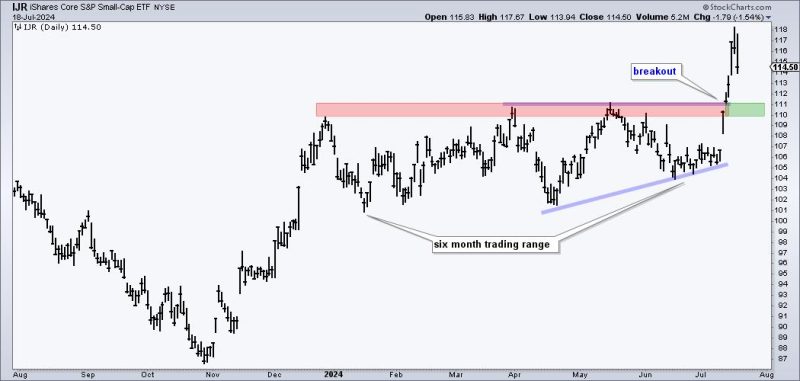Small Caps Break Out and Lead – Now What?
Market analysts have been closely monitoring the recent breakout of small-cap stocks, which have been showing strong performance and outpacing the broader market indices. This surge in small-cap stocks has led many investors to wonder about the implications and potential future trends in the stock market.
Historically, small-cap stocks have been considered riskier investments compared to large-cap stocks due to their higher volatility and susceptibility to market fluctuations. However, the recent breakout of small caps and their significant outperformance have sparked optimism among investors looking for higher returns.
One key factor driving the success of small-cap stocks is their sensitivity to economic recovery. As the economy continues to rebound from the impacts of the pandemic, small-cap companies are benefiting from increased consumer spending and business expansion opportunities. This favorable economic environment has translated into strong earnings growth for many small-cap stocks, driving their prices higher.
Moreover, small-cap stocks are often seen as a barometer of market sentiment and risk appetite. When small caps outperform, it is typically interpreted as a positive signal for the overall market health. Investors tend to view small-cap strength as an indication of confidence in economic growth and corporate profitability, which can attract more capital into the stock market.
Despite their recent success, small caps are not immune to risks and challenges. The volatility inherent in small-cap stocks means that their prices can fluctuate significantly in a short period, leading to higher potential gains but also increased losses. Investors need to be prepared for the possibility of sharp pullbacks in small-cap stocks and manage their risk accordingly.
Additionally, small-cap stocks may face headwinds from factors such as rising interest rates, inflationary pressures, and global economic uncertainties. These macroeconomic conditions could impact the performance of small-cap companies and create challenges for investors seeking to capitalize on the small-cap breakout.
In conclusion, the breakout of small-cap stocks presents both opportunities and risks for investors. While the recent strong performance of small caps has been promising, investors should remain cautious and conduct thorough research before investing in these stocks. Understanding the market dynamics, economic factors, and risk management strategies are essential for navigating the small-cap space effectively in the current market environment.
Overall, the future of small caps remains uncertain, but their breakout and leadership position in the market reflect a potential shift in investor sentiment and market dynamics. By staying informed and vigilant, investors can make informed decisions and navigate the evolving market landscape successfully.



























